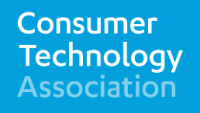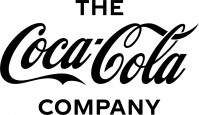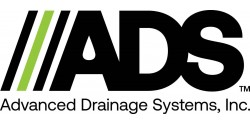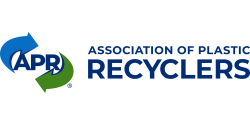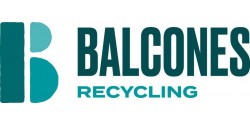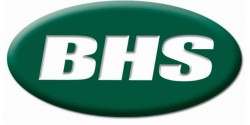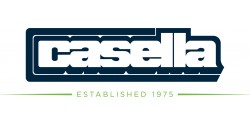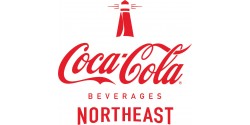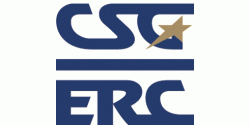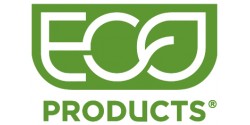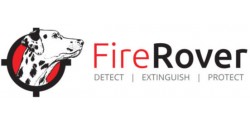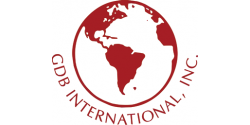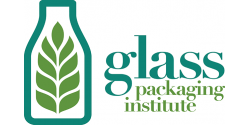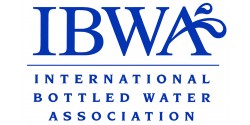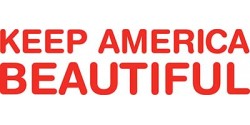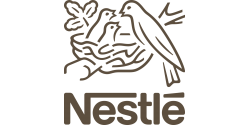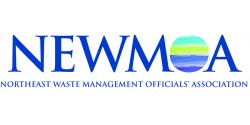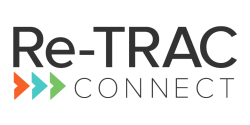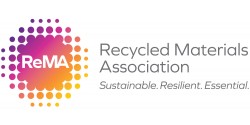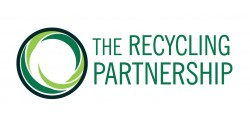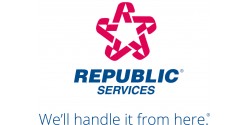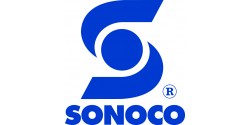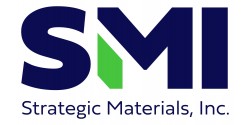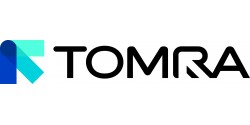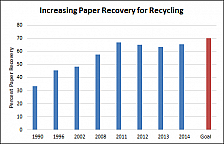May 2016
NEW & RENEWING MEMBERSHIPS
Renewing Distinguished Benefactor
New Sustaining Member
Renewing Supporting Member
Member Spotlight - American Forest & Paper (AF&PA)
NERC NEWS
- NERC’s Spring Conference Turned a Sedate Topic Into a Lively One
- Photo Scrapbook from Spring Conference Now Available
- Panasonic Honored by NERC for its Support & Commitment to the Environment
- CRTs: What Can Be Done?? – Meet Some of the End Markets: Part 2” - May 19th
- Real Impact - State Electronics Challenge Annual Environmental Results & Awards Announced
- Sustainability & Your Office Equipment – What can you do? - Webinar - May 10
- Board Member Presents on Future of Curbside Material Mix
- NERC Presents Textiles Collection Training in New Hampshire
- Blog Worth Repeating - Smart Waste Management
STATE UPDATES
MASSACHUSETTS
ADVISORY MEMBER NEWS
- Samsung Receives ISRI Design for Recycling Award
- Advisory Member Ray Dube, Coca-Cola Bottling of Nothern New England, interviewed on The Longview with Dave Danielson - Topic: Sustainability
- XR Shredder Achieves Global Sales
OF GENERAL INTEREST
- Job Opening - Halifax, MA - Municipal Assistance Recycling Coordinator
- EPA WARM Model Updated - now includes anaerobic digestion
- EPA Launches New C&D Webpages
NEW & RENEWING MEMBERSHIPSMembership is key to NERC's regional and national committment to sustainable materials management. We are delighted to thank Samsung for its leadership support of NERC as a Distinguished Benefactor. We are very pleased to welcome our newest Sustaining Member - BHS-Sonthofen. Joining BHS-Sonthofen in their support of NERC is renewing Supporting Member the Connecticut Recyclers Coalition (CRC).
To see a complete listing of NERC's Members and Supporters, as well as the benefits of membership, visit the NERC Advisory Membership web page.
The broad spectrum of interests represented by NERC's Advisory Members, Individual Supporters, and Board Members and their willingness to participate significantly contribute to the unique and important role that NERC plays in recycling in the region.
For more information, contact Lynn Rubinstein, Executive Director.
Member Spotlight - American Forest & Paper (AF&PA)
The American Forest & Paper Association (AF&PA) is a leader in championing paper 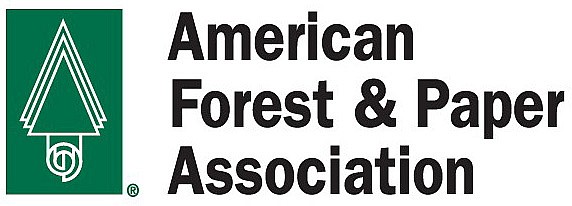 recovery for recycling and has been for more than two decades. They serve to advance a sustainable U.S. pulp, paper, packaging, tissue and wood products manufacturing industry through fact-based public policy and marketplace advocacy. AF&PA member companies make products essential for everyday life from renewable and recyclable resources and are committed to continuous improvement through the industry’s sustainability initiative - Better Practices, Better Planet 2020.
recovery for recycling and has been for more than two decades. They serve to advance a sustainable U.S. pulp, paper, packaging, tissue and wood products manufacturing industry through fact-based public policy and marketplace advocacy. AF&PA member companies make products essential for everyday life from renewable and recyclable resources and are committed to continuous improvement through the industry’s sustainability initiative - Better Practices, Better Planet 2020.
The forest products industry accounts for approximately 4 percent of the total U.S. manufacturing GDP, manufactures over $200 billion in products annually, and employs approximately 900,000 men and women. The industry meets a payroll of approximately $50 billion annually and is among the top 10 manufacturing sector employers in 47 states.
Through Better Practices, Better Planet 2020, one of the most extensive sets of quantifiable sustainability goals of any major U.S. manufacturing industry, AF&PA members have made great strides to continue their proven performance and push to new heights. AF&PA is proud to represent member companies who take seriously their commitment to sustainability. The six targeted AF&PA Sustainability Goals are listed below, with the first one dedicated to paper recovery.
- Exceed 70 percent rate of paper recovery for recycling by 2020.
- Improve AF&PA members’ purchased energy efficiency use by at least 10 percent from 2005 to 2020.
- Reduce AF&PA members’ greenhouse gas (GHG) emissions by at least 15 percent from 2005 to 2020.
- Increase the amount of fiber procured from certified forestlands, or through certified fiber sourcing programs, in the U.S. from 2005 to 2020.
- A 25 percent improvement in workplace injury incidence rates from 2006 to 2020, with a long-term vision of zero injuries.
- Reduce water use in members’ pulp and paper mills by 12 percent from 2005 to 2020.
Paper Recovery Goals
The U.S. paper recovery rate rose to 65.4 percent in 2014, up from 63.5 percent in 2013. And, the U.S. paper recovery rate has reached or exceeded 63 percent each year since 2009. That’s great news for the environment and for the paper industry. In fact, the annual paper recovery rate has nearly doubled since 1990, making it a true environmental success story.
AF&PA member companies' use of recovered fiber results in avoided greenhouse gas emissions of more than 20 million metric tons of CO2 equivalents each year. Approximately 79 percent of all U.S. papermakers use some recovered paper to make everything from paper based packaging to tissue products to office paper and newspaper.
AF&PA leads a variety of efforts to encourage and increase paper recovery for recycling.
AF&PA is currently investing in public-private partnerships to build community recycling infrastructure and improve consumer recycling education. In addition, working with its members and other recycling industry stakeholders, it is developing recommendations on action that AF&PA can take to further promote increased paper recovery for recycling.
AF&PA Paper Recycles Website
Recycling advocates have benefited greatly from AF&PA’s Paper Recycling website. Its mission is to promote increased paper recovery for recycling by raising awareness about the importance of recycling, educating key stakeholders about the success of the voluntary paper recovery system, and providing tools and resources to help communities, businesses and schools start or improve paper recycling programs.
Resources on the website include:
- Recycling guides specific to workplace, school and community environments;
- Frequently asked questions (FAQ) about paper recycling;
- Improving Paper Recycling video
- A paper-making video; and
- Think Before You Shred! A guide to shredding and recycling paper.
There’s a wealth of statistics that can be found on the website. Fun Facts can also be found on both the AF&PA and the Paper Recycling websites.
Why AF&PA is a NERC Member
Recycling is, of course, a central focus of AF&PA. The industry’s paper recovery rate was 65.4 percent in 2014. Stated Brian Hawkinson, Executive Director of Recovered Fiber, “Becoming a Sustaining Advisory Member of NERC is another way for AF&PA to show its commitment to recycling. With a goal of exceeding 70 percent recovery by 2020, it’s important that we continue to grow our connections with others in recycling and develop new and innovative ways to capture paper and paper products for recovery.”
For more details check out AF&PA's Commitment to Sustainability 2014 video and 2014 Sustainability Report.
And the future for AF&PA and its members? Mr. Hawkinson remarks that “Our industry will continue to nurture an environment that promotes increased paper recovery.Innovation in manufacturing processes and products will also continue to be a focus, along with adapting to market changes and striving to meet the industry’s sustainability goals. Our members envision a forest products industry that is fully sustainable, has profitable long-term growth, and continues to reduce its environmental footprint.”
NERC NEwS
NERC’s Spring Conference Turned a Sedate Topic Into a Lively One
Industry, government, and communities were all part of the discussion about recycling markets at NERC’s Spring Conference—Recycling Is Not Broken: Facts vs. Fiction— in Princeton, New Jersey.
On the surface, talking about recycling markets may not seem like the most exciting topic. You would never have known that though, if you had peaked in the door of NERC’s Conference. Presenters and attendees alike were thoroughly engaged in exploring the issues contributing to and strategies for dealing with today’s markets. 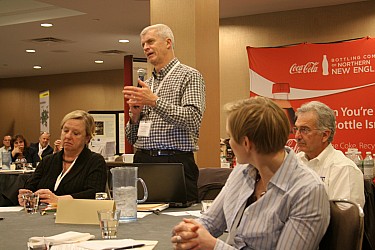
“Conference attendees and speakers represented a great cross-section of the recycling community in the Northeast,” said John Filippelli of EPA Region 2.
The topics discussed at the Conference included the market impacts on sustainable materials management for industry and government; the economic and environmental benefits of recycling to remind us of the key issues about why we continue to recycle, and strategies used by government and industry for successfully succeeding with the markets. An informal discussion was also offered for attendees to share their experiences with working on market issues.
The combination of timely topics, high-caliber speakers, and the active participation of all at the event made the Conference extremely informative and an unquestionable success.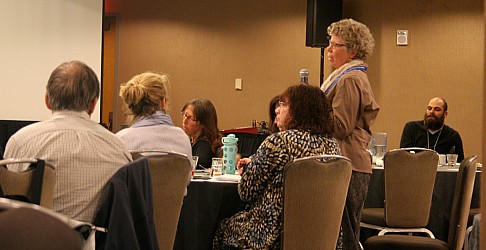
Here’s what some of the attendees had to say:
According to Sharon Kishida of the Massachusetts Department of Environmental Protection, “What I like so much about NERC conferences is that they drill down on a particular topic by bringing in the experts to discuss it.”
Debra Darby of Organix Solutions commented, “NERC’s conference is the best [event] for understanding how the Northeast is working to harmonize around the issues most important to the region.”
For more information about the Conference, contact Mary Ann Remolador, NERC’s Assistant Director & Events Organizer.
Photo Scrapbook from Spring Conference Now Available
For the first time NERC has published a photo scrapbook from its conference. Take a look and see who you know (or maybe even see yourself . . . ).
Panasonic Honored by NERC for its Support & Commitment to the Environment
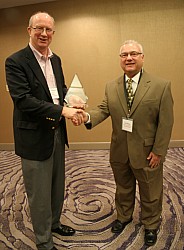 NERC is pleased to honor Panasonic for its many-year generous support of NERC and its programming, as well as Panasonic's commitment to environmental sustainability. At the recent Spring Conference in Princeton, NJ, NERC Board President Rick Watson (right) presented David Thompson, Director, Corporate Environmental Department, Panasonic with an award.
NERC is pleased to honor Panasonic for its many-year generous support of NERC and its programming, as well as Panasonic's commitment to environmental sustainability. At the recent Spring Conference in Princeton, NJ, NERC Board President Rick Watson (right) presented David Thompson, Director, Corporate Environmental Department, Panasonic with an award.
Thank You to All Who Helped Make NERC’s Spring Conference a Success!
NERC’s Conference includes the participation of many people to create an effective event—agenda planners, presenters, session facilitators, sponsors, exhibitors, and attendees. We would like to thank all who attended the Conference and for being so engaged in the topics discussed.
We also want to thank the following people and businesses for planning for, presenting at and sponsoring and exhibiting at the Conference:
Conference Planners
- Rick Watson, Delaware Solid Waste Authority & President of NERC Board
- Chaz Miller, National Waste & Recycling Association & Ex Officio Board Member
- Chip Foley, Ex Officio Board Member
- Joe Pickard & Mark Reiter, Institute of Scrap Recycling Industries (ISRI) & NERC Advisory Members
- Marie Kruzan, Association of New Jersey Recyclers & NERC Advisory Member
- Christine Cassidy, DART & NERC Advisory Member
- Gunther Wellenstein, City of Lowell (Massachusetts) & NERC Advisory Member
- Joanne Shafer, Centre County Recycling & Refuse Authority (Pennsylvania) & NERC Advisory Member
- Dave Keeling, Steel Recycling Institute & NERC Advisory Member
Conference Presenters & Session Facilitators
- Eric Harris, Institute of Scrap Recycling Industries (ISRI)
- Susan Robinson, Waste Management, Inc.
- Joanne Shafer, Centre County Recycling & Refuse Authority
- J.P. Mascaro III, JP Mascaro & Sons
- Bryan Vickers, Glass Packaging Institute
- Richard Keller, Maryland Environmental Services
- Marie Kruzan, Association of New Jersey Recyclers
- Mike Parkowski, Delaware Solid Waste Authority
- John Stanton, Atlantic Coast Fibers
- Samara Norman, Trex Company, Inc.
- Chaz Miller, National Waste & Recycling Association
- Patty Moore, Moore Recycling Associates
- Janet Pellichero, Town of Princeton
- Brian Hawkinson, AF&PA
- Frank Chimera, Republic Services
- Dave Keeling, Steel Recycling Institute
- Rick Watson, Delaware Solid Waste Authority
- Guy Watson, New Jersey Department of Environmental Protection
- Brian Shine, Manitoba Corporation
- Carl Hursh, MSW Consultants
Conference Sponsors/Exhibitors
- Panasonic
- Trex Company, Inc.
- Consumer Technology Institution
- Samsung
- Recycling Today
- Resource Recycling
- Coca-Cola Bottling Company of Northern New England
- Mott MacDonald
- Schaefer Systems International
- Industrial Hearing Testing
- Natural Systems Utilities
For more information about NERC’s Conferences, contact Mary Ann Remolador.
“CRTs: What Can Be Done?? – Meet Some of the End Markets: Part 2”
Tune in to an informative webinar the afternoon of May 19th to learn more about some CRT recycling possibilities, what issues companies face, and the potential for various technologies to address the CRT problem. This is an extension of the 1st CRT End Markets Webinar we had on March 29th. Please contact us for PDF copies of the presentations if you were unable to attend.
Sponsored by the U.S. EPA Region 3, the Northeast Recycling Council (NERC), and the Electronics Recycling Coordination Clearinghouse (ERCC) Four knowledgeable panelists will share their expertise and opinions,
followed by a question and answer session.
WHEN: Thursday, May 19th, from 2 pm-4 pm EST
WHO: Lauren Roman: Spokesperson for COM2 Recycling Solutions, (Managing
Director of Transparent Planet)
Dale Helgeson: DP Electronic Recycling
Albino Bessa: Videocon Americas
Carlos Kelvin: Cali Resources Inc / Glassico / TDM
COST: Free of charge
This webinar will be held through the Adobe Connect platform.
Registering and tuning in to the webinar is simple.
Please share with any of your regional contacts who might be interested in this topic.
EPA Disclaimer
Any information presented or opinions expressed during the webinar are solely those of the presenter and do not necessarily reflect the positions or the opinions of the US EPA. In addition, the purpose of the webinar is for information-sharing only. Participation of specific presenters does not reflect or imply US EPA endorsement of a presenter or the presenter’s respective company or organization.
Real Impact - State Electronics Challenge Annual Environmental Results & Awards Announced
The State Electronics Challenge (SEC) reached almost 160 Partners in 2015, and those Partners employ over 212,000 people.
The table below summarizes the environmental results of Partners’ efforts in calendar year 2015 to “green” the lifecycle of their electronic office equipment; from purchasing EPEAT® (Electronic Product Environmental Assessment Tool) registered computers and imaging equipment, to lowering the energy consumption in use, extending the lifetime of equipment, and responsibly recycling office electronics at the end of their service life.
This table summarizes the results from the 36 Partners that provided data on their 2015 SEC activities.
2015 Partner Environmental Benefits
|
Purchasing EPEAT® Products |
Use |
Reuse & Recycling |
TOTAL BENEFITS |
|||
|
Reduction In |
How Much? |
How Much? |
Equivalent To |
|||
|
|
Energy use |
9.9 million kWh |
44.7 million kWh |
45.6 million kWh |
110.2 million kWh |
Electricity to power 7,845 U.S. households/ year |
 |
Greenhouse gas emissions |
1,645 metric tons of carbon equivalents |
8,282 metric tons of carbon equivalents |
2,061 metric tons of carbon equivalent |
11,988 metric tons of carbon equivalents |
Removing 8,619 cars from the road/year |
|
Toxic materials, including lead & mercury |
64 lbs. |
30 lbs. |
18 lbs. |
112 lbs. |
Weight of 25 bricks |
|
 |
Municipal solid waste |
319,119 lbs. |
584,214 lbs. |
696,163lbs. |
1,599,496 lbs. |
Waste generated by 388 households annually |
|
|
Hazardous waste |
67,908 lbs. |
32,040 lbs. |
476,777 lbs. |
576,725 lbs. |
Weight of 2,120 refrigerators |
And 12 Partners Received Awards
In 2015, the SEC recognized 12 Partners for their outstanding work in electronics stewardship by completing SEC program requirements. SEC Partners were eligible for one of three recognition levels – Bronze, Silver, or Gold - based on completion of SEC program requirements.
|
SEC Partner |
Recognition |
Lifecycle Phases |
|
Gold |
Purchasing, Use, & End-of-Life Management |
|
|
Gold |
Purchasing, Use, & End-of-Life Management |
|
|
Gold |
Purchasing, Use, & End-of-Life Management |
|
|
Gold |
Purchasing, Use, & End-of-Life Management |
|
|
Gold |
Purchasing & End-of-Life Management |
|
|
Gold |
Purchasing, Use, & End-of-Life Management |
|
|
Gold |
Purchasing, Use, & End-of-Life Management |
|
|
Gold |
Purchasing, Use, & End-of-Life Management |
|
|
Chewonki Foundation, Maine |
Silver |
Use & End-of-Life Management |
|
Silver |
Purchasing & End-of-Life Management |
|
|
Bronze |
End-of-Life Management |
|
|
Bronze |
Purchasing |
Interested in learning more about the program and what it offers? A free webinar is being offered May 10th. Take a look at the next article to learn more.
The State Electronics Challenge is sponsored by Samsung, Panasonic and R2/RIOS.
Sustainability & Your Office Equipment – What can you do? - Webinar - May 10th
Buying green, saving power & paper, responsible reuse & recycling - the State Electronics Challenge is a free program that can assist you to improve your organization’s sustainability practices.
The Challenge is open to local, regional, tribal, and state governments, all public & private K-12 schools, colleges and universities, and non-profit organizations. Participants receive access to free technical assistance, tools, resources, and recognition in support of their efforts to decrease the environmental impact of electronic office equipment. The Challenge also documents the success of participating organizations. Program participants receive annual sustainability reports that detail their reductions in energy use, greenhouse gases, and waste.
To learn more about the State Electronics Challenge, register for the upcoming introductory webinar:
Board Member Presents on Future of Curbside Material Mix
Chaz Miller, NERC Ex officio Board Member, and Dylan de Thomas, editor of Resource Recycling magazine, did an EPA Sustainable Materials Management (SMM) Web Academy Webinar on "Changes in the Waste Stream - the Future of the Curbside Material Mix”. The webinar looked at the impact of the evolving ton and market fluctuations on recycling and offered advice for how to adapt to these fluctuations.
NERC Presents Textiles Collection Training in New Hampshire
Textiles collection is a topic on the minds of New Hampshire transfer station operators and the New Hampshire Department of Environmental Services (NHDES). On April 22nd, NERC presented a training for NHDES to more than 100 transfer station operators about how to 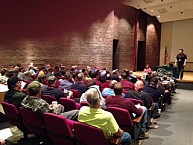 set up and operate a municipal textiles collection program. NERC was joined in presenting the training by representatives of three organizations involved with textiles collection: SMART (Secondary Materials & Recycled Textiles Association), Apparel Impact, and the Epilepsy Foundation of New England.
set up and operate a municipal textiles collection program. NERC was joined in presenting the training by representatives of three organizations involved with textiles collection: SMART (Secondary Materials & Recycled Textiles Association), Apparel Impact, and the Epilepsy Foundation of New England.
Contact Mary Ann Remolador if you have any questions about the training or setting up and operating a textiles collection program.
Blog Worth Repeating - Smart Waste Management
Citiscope recently posted a great article about the transformation of Ljubljana [luˈblàːna] into a green city. The relatively small Slovenia capital of 287,000 residents was named by the European Commission as the European Green Capital for 2016.
One reason for the recognition is that the city has virtually eliminated cars from its downtown core; only pedestrians, bicycles, and buses are allowed. There’s an electric taxi service called Kavilir which provides free rides for the elderly, disabled, or mothers with children. There’s also an underground garage located just outside of the car-free zone for people who live in the city or are traveling there.
The green city label has proved effective as a marketing tool for increasing tourism. Reportedly, business and tourism is thriving in the car-free zone despite initial fears that the elimination of auto traffic would be bad for business in the city’s commercial sector. And city residents have embraced the undertaking. There are even “Green Capital” events and activities planned for throughout the year—starting with “Smart Waste Month”, celebrated in January.
According to Citiscope, Ljubljana’s mayor Zoran Janković led the “green” charge with a long-range plan for improving the quality of life in the city. Called Vision 2025, the plan laid out goals for a more sustainable transportation system, green space conservation, and waste management.
Europe’s First Zero Waste Capital
Ljubljana is the first capital in Europe to declare a zero waste goal. The city’s residents and businesses successfully divert 61% of its municipal waste through recycling, far higher that the EU average level of source separation at 42%. The city’s goal is to reach 78% diversion by 2025.
According to a case study recently posted by Zero Waste Europe, “Ljubljana has avoided incineration, while proving that going towards zero waste is completely feasible in a very short time. At the same time, it has made once again evident that effective door-to-door separate collection doesn’t only fall in the realm of small villages, but also works in large cities. Ljubljana has, therefore, managed to become the best performing EU capital, keeping one of the lowest waste management cost in Europe.”
Collection bins for residual waste, biological waste, packaging and paper are located around the city. The city’s recent adoption of underground collection points is proving effective as a waste management option. Material is deposited in above ground containers leading to underground storage for later collection. Glass, packaging (cans), and paper bins are open for anyone to use. An electronic card is required for depositing organic and residual waste (available free of charge to all residents living in the area). In an effort to reduce wasted food, the electronic card is equipped with a microchip allowing residents to deposit only a certain amount of organics per week.
There are currently 47 underground collection points in the city, with a further 40 planned. In addition, there are more than 2,500 other collection points around the city, which consist of three color-coded containers for paper and cardboard. Thousands of additional containers have been placed around the city as well, for packaging (at some 24,000 collection points) and organics (at some 16,000 collection points). According to the city’s website, the system has proved successful for diverting waste and has helped to keep the city clean.
The city’s website states that its Waste Management Program is focused on “reducing the quantity of waste food and extending the life cycle of objects.” In 2013 the city undertook an intensive communication campaign using website promotion, Facebook, neighborhood events, and an online campaign.
Household hazardous waste and electrical/electronic equipment are collected at drop points around the city, as well at a central recycling center. At the center, residents sort recyclables or usable items in 30 different containers (including scrap metals, yard trimmings, and tires). Reuse is encouraged for bulky waste, which is collected both curbside and at the recycling collection center.
At the collection center, clothing, footwear, textiles, toys, kitchenware, school supplies, and other materials are collected for distribution to charity organizations. Plans for promoting more reuse through repair, by establishing social enterprises, are also underway.
A reuse center, called the “Library of Things” was opened to promote the sharing or renting of items, such as tools or sporting equipment.
With inspiration and action taken by various cultural associations and neighborhood residents, an abandoned construction site was converted into an urban garden. The land is owned by the city, which has allowed the gardening to continue.
“Green” vacation destination anyone?! Perhaps there’s a need for a materials management travel agency…
By Athena Lee Bradley, NERC Projects Manager
STATE UPDATES
Announcing Round 2 of MassDEP’s New Recycling Business Development Grant Program
The Recycling Business Development Grant (RBDG) program is intended to help Massachusetts recycling processors and manufacturers create sustainable markets for eligible materials, and to add value to municipal and business recycling efforts. Selected applicants can receive grant awards up to $400,000. The eligible materials for RBDG funding are glass, mattresses, packaged food materials, and post-consumer bulky rigid or film plastic. Please note that this application form has been updated from the Round 1 application form to include several program clarifications. If you plan to apply, please be sure to use the version that is currently posted on the MassDEP web site.
The round 2 application deadline is:
July 15, 2016, at 5:00 PM
Or, contact:
Greg Cooper, greg.cooper@state.ma.us, 617-292-5988
OR
John Fischer, john.fischer@state.ma.us, 617-292-5632
ADVISORY MEMBER NEWS
Samsung Receives ISRI Design for Recycling Award
Samsung was recent awarded with ISRI’s 2016 Design for Recycling® Award for its approach to creating innovative products with the environment in mind. ISRI’s most prestigious accolade 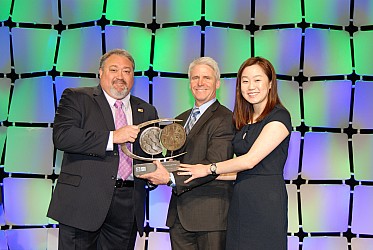 celebrates the achievements of companies that place recycling at the forefront of each stage of the product life cycle. Samsung was recognized for the innovative use of environmentally-conscious materials in its 2016 Curved Full HD TV (UN55K6250) and its easy-to-disassemble, snap-together parts which eliminate the use of many screws and make it easier for recyclers to recover.
celebrates the achievements of companies that place recycling at the forefront of each stage of the product life cycle. Samsung was recognized for the innovative use of environmentally-conscious materials in its 2016 Curved Full HD TV (UN55K6250) and its easy-to-disassemble, snap-together parts which eliminate the use of many screws and make it easier for recyclers to recover.
Doug Kramer, National Chair of ISRI, presents Mark Newton and Dinah Rhee, Samsung with Design for Recycling Award
Ray Dube, Coca-Cola Bottling of Nothern New England, interviewed on The Longview with Dave Danielson - Topic: Sustainability
There's still a chance to watch Ray Dube, Sustainability Manager, Coca-Cola of Northern New England, being interviewed about sustainability. This very interesting interview covers the impacts of technology advances on sustainability opportunities, as well as the impacts on job, the environment and the economy. Take a look!
XR Shredder Achieves Global Sales
UNTHA’s new XR mobil-e has dominated the headlines in recent months. But whilst all eyes may have been on this latest waste shredding innovation, the highly-acclaimed static XR has also achieved significant global success.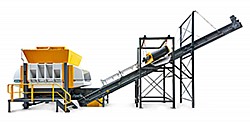
Within months this clever waste shredder was attracting varied international inquiries, not just from the countries where UNTHA’s subsidiary companies are situated. And fast forward to the present day, the XR has been selected to play a prominent part in dozens of waste to energy projects worldwide.
To date, the shredder has been sold to multiple sites in the UK, Germany, Austria and France, plus Ireland, Finland, Poland, Turkey, Portugal, Bulgaria, Mexico, the USA, South Korea and Vietnam.These projects see the XR - renowned as one of the most flexible waste shredders on the market - processing Municipal Solid Waste (MSW), Commercial & Industrial waste, production waste, bulky waste and pulper ropes, to name just a few applications. In some instances the technology is acting as a robust pre shredder, whereas on other sites it provides a single step shredding solution for Solid Recovered Fuel (SRF) production.
Commenting on the success of the machine to date, the head of UNTHA's waste division Peter Streinik said: "We knew the XR had the potential to change the way operators process waste and produce alternative fuels. It's quieter, more environmentally sound, easier to maintain and cheaper to run than its counterparts in the market. It's safe to say the team is delighted by the global impact it is has had in only a short space of time." The mobile version of this shredder - the XR mobil-e - is currently on a demonstration roadshow throughout Europe. To arrange to see the machine in operation under real shredding conditions, call 0043 624 470 160 or email info@untha.com.
IFAT premiere: New ball shaper for fine fractions containing metal reclaims more recyclable materials
Rotor impact mill with narrower grinding gap generates finer fractions and an enhanced ball-shaping effect
BHS-Sonthofen Unveils New Rotor Impact Mill
BHS-Sonthofen has unveiled anew rotor impact mill of type RPMX for separating composite parts and shaping metals from recycling products such e-scrap, shredder residues (ASR) and slag into balls. The new RPMX is a further development of the established rotor impact mill of type RPMV and generates finer fractions from which recyclable materials can be reclaimed more effectively. It enables the efficient reclamation of materials such as stainless steel and cable strands, which were previously considered problematic.
The rotor impact mill of type RPMV is an established recycling machine used for 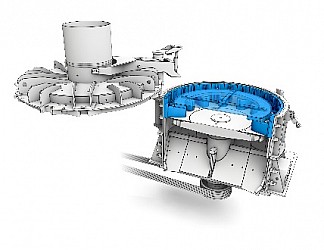 separating composites, crushing brittle components and shaping ductile components into balls in a wide variety of applications. The new rotor impact mill of type RPMX from BHS-Sonthofen is a valuable addition to the existing range of systems for recycling residual materials.
separating composites, crushing brittle components and shaping ductile components into balls in a wide variety of applications. The new rotor impact mill of type RPMX from BHS-Sonthofen is a valuable addition to the existing range of systems for recycling residual materials.
The gap between the grinding tools and the anvil ring on the new machines is much smaller: The gap width is only 5 mm. In combination with higher circumferential speeds, they generate finer fractions and intensify the ball-shaping effect, whereby a much higher proportion of materials is reclaimed than before.
One application example is the disaggregation and shaping of wires and strands into balls. Previously, conventional sorting systems were not able to separate these wires and strands because long thin parts evaded the separation process in air separator tables or non-ferrous separators. The RPMX compacts and shapes individual parts into balls so that they can then be separated cleanly. The machine is also suitable for handling pure cable fractions.
The "Zurik" fraction of mixed shredder residues containing between 30 and 85% metal (predominantly stainless steel but also copper and aluminum) can now be efficiently separated into individual components after being processed in the RSMX.
The technology in detail
The input material is fed into the machine from above by means of the central input tube. When it hits the cover plate of the rotor, it is accelerated outwards by the centrifugal forces and falls into the grinding gap between the horseshoe-shaped impact hammers and the anvil ring. Here, it is struck by the impellers and thrown against the outer wall. The material passes from top to bottom all the way through the gap between the impact hammers and the stationary ribs on the anvil ring. During this process, it is highly stressed by impact, shock and shearing forces that cause the composite parts to separate. The brittle components are crushed while multiple stresses shape the ductile components into balls. The material leaves the rotor through the gap between the rotor and the anvil ring and falls downwards through the two discharge chutes.
The new rotor impact mill from BHS-Sonthofen is available in two versions: the RPMX 1116 with a diameter of 43” [1.10 m], eight impact hammers and a maximum drive power of 300 Hp [200 kW], and the larger RPMX 1516 with a diameter of 59” [1.50 m], twelve impact hammers and a maximum drive power of 425 Hp [315 kW].
Pre-shredding
Object fractions between 12” and 20” in size are pre-shredded by a BHS Rotorshredder of type RS, which generates fractions smaller than 1” suitable for the rotor impact mill. Before the material can be further processed in the RPMX, an air sifter removes any potentially harmful components.
Background: BHS rotor impact mills
Also known as "ball shapers" in the industry, the BHS rotor impact mills from the RPMV series are high-performance crushers with a vertical shaft for applications in the recycling industry. The ring-shaped rotor is fitted with horseshoe-shaped hammers. In combination with the toothed anvil ring, this unique impeller rotor is able to selectively crush composite parts.
Materials that have different physical properties are separated from one another in the machine and entangled materials are singled out. At the same time, the machine shapes the ductile metals into balls and cleans them. In the subsequent process steps, they are much easier to separate than elongated metal parts, which can become entangled and matted.
About BHS-Sonthofen GmbH
BHS-Sonthofen is an owner-operated group of companies in the machinery and plant engineering field, based in Sonthofen, Germany. The company offers technical solutions for mechanical process engineering, concentrating primarily on mixing, crushing, recycling and filtration. With more than 350 employees and several subsidiaries, BHS-Sonthofen has a global presence.
The Recycling Technology division offers a wide range of machines and systems for the recycling industry. The product spectrum covers the processing of brittle-hard waste materials such as electronic waste, slag, shredder residual fractions etc., as well as resilient materials such as tires, cables, and refuse-derived fuels.
For more information, see www.bhs-recycling.com.
OF GENERAL INTERESTJob Opening - Halifax, MA - Municipal Assistance Recycling Coordinator
|
Municipal Assistance Recycling Coordinator for Southeast District 3
No specific job application
|
This is an independent contractor position funded by the Massachusetts Department of Environmental Protection through a grant awarded to the Town of Halifax. The position is funded at 36 hours per week, with an annual ceiling of 1,800 hours. Annual starting salary $55,000. Up to $5,000 annual reimbursement for self-employment tax. Use of personal vehicle is required. The Coordinator provides technical assistance to municipalities to increase recycling, composting, waste reduction, household hazardous waste diversion and regional cooperation. Please send resume, cover letter and three professional references via email to Susan Johnston at sjohnston@town.halifax.ma.us - As the Host Community, the Town of Halifax will provide office space, phone, computer, and email for the Coordinator. Applications will be accepted through May 2, 2016. Qualified candidates will be contacted by May 11th to schedule an interview. Interviews will be conducted on Wednesday, May 18th.
|
Appilcation deadline: May 2, 2016
|
EPA WARM Model Updated - now includes anaerobic digestion
EPA has updated its the Waste Reduction Model (WARM). And, the great news it that it includes anaerobic digestion (AD).
It is modeling wet digestion for the AD column with an opportunity to choose dry digestion for food waste. There are also instructions for anyone that it using it for yard waste to change to dry digestion.
In the next phase of WARM, EPA will be adding a stand alone organics module that will include food donation. They hope to have that completed by the end of this year.
EPA created the Waste Reduction Model (WARM) to help solid waste planners and organizations track and voluntarily report greenhouse gas (GHG) emissions reductions from several different waste management practices. WARM calculates and totals GHG emissions of baseline and alternative waste management practices—source reduction, recycling, anaerobic digestion, combustion, composting and landfilling.
EPA Launches New C&D Webpages
EPA has launched new C&D webpages. The two main pages include:
· Sustainable Management of Construction and Demolition Materials that employs an accordion format to cover the basic C&D topics, including info on C&D material generation in the US; and
· Best Practices for Reducing, Reusing, and Recycling Construction and Demolition (C&D) Materials that adds other practical information to the topics in the Sustainable Management of Construction and Demolition Materials page.
EPA is intending to further improve the pages and add Region 2’s abandoned mobile home toolkit, Region 5’s asphalt shingles reports, and newly updated state C&D reports from Region 9.


